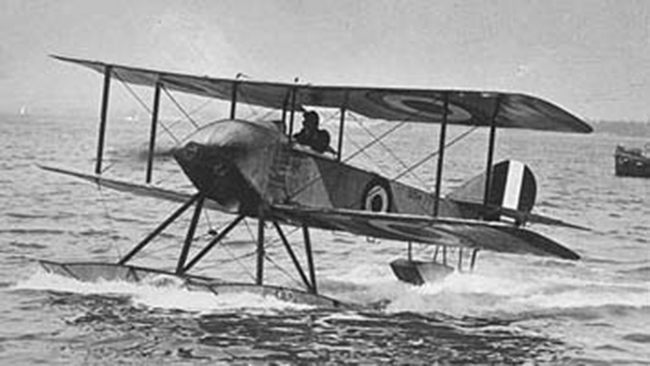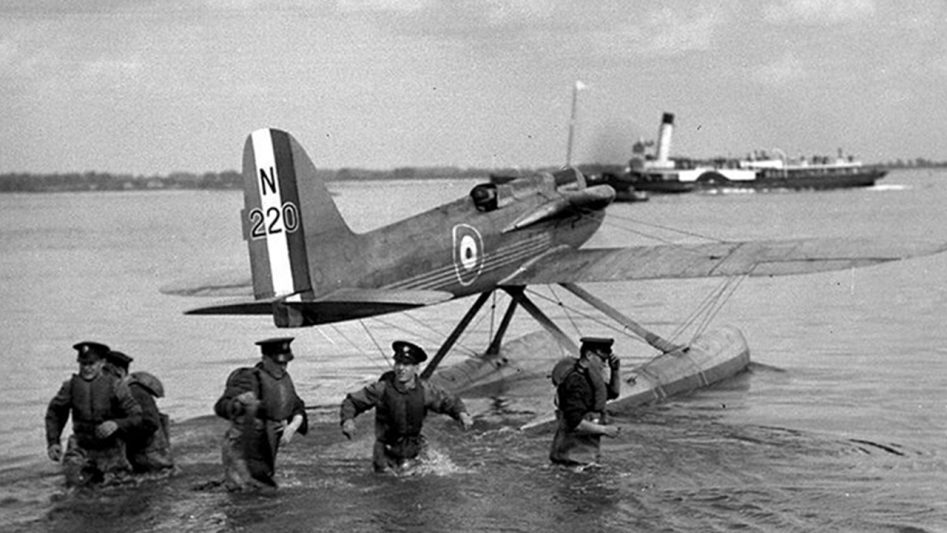It’s hard to imagine now, in an age of social media celebrities and millionaire sportsmen, but aerial racing was once the craze to take Europe by storm. The Schneider Trophy was born not long after the first successful aircraft, the conception of Jacques Schneider a rich Frenchman with a passion for aviation, it pitted nations against each other to push the boundaries of aeronautical engineering and drive technical development in the industry. Schneider developed a passion for aircraft after meeting Wilbur Wright on a visit to Le Mans and envisioned that the seaplanes could prove popular in the future, considering the locations of major cities of rivers and seafronts.
The Schneider Trophy was first held in 1913, in Monaco, with teams racing time trials around a closed circuit and then the average speed being measured. To truly test the construction of the aircraft, they were to sit in the water for 6 hours prior to racing the course.
3 teams entered the first trophy, 2 from France and one from the USA, with the Frenchman Maurice Prevost winning the competition, achieving an average speed of 45.75mph.
As the years progressed, the Schneider Trophy begun to achieve more in progressing the development of airframes as Schneider had hoped. The aircraft competing at the 1913 competition had simply been conventional aircraft with floats installed, but by the time of the 1914 competition, Britain had a purpose built the Sopwith Tabloid floatplane. The aircraft went on to nearly double the previous year’s average speed, winning the trophy at an average speed of 86.83 mph. The Sopwith Tabloid would be the first of a number of aircraft born from the competition to go on and form the basis of technically groundbreaking warplanes. With the Schneider Trophy suspended for the duration of the war the Tabloid’s simple but effective design would evolve into highly successful aircraft like the Camel, Pup and Triplane.

Sopwith Tabloid floatplane
Not only was the Schneider Trophy driving powerful innovation in the aircraft industry, but it was also proving immensely popular with a public fascinated by the groundbreaking machines. In 1919, the trophy was held in Bournemouth and drew crowds of over 100,000 people. This huge crowd would be a high point for years to come with the success and popularity of the trophy dwindling over the following years, largely down to the post-war economic environment that made such frivolous investment hard to justify. The Italians faced no challenge at the 1920 and 1921 events, though this did not dampen their mood having set a new record speed of 118mph by 1921.
By 1922, Britain had the brilliance of Reginald J Mitchell behind their design. Mitchell was an incredible man and arguably suffers in the shadow of men like Frank Whittle, Mitchell became the head designer at the famous Supermarine company at just 24 and would go on to pioneer the design behind the legendary Spitfire, an aircraft that owes nearly everything to the late year designs of the Schneider Trophy.
Britain won the 1922 trophy, with the Supermarine Sea Lion II setting an average speed of 145 mph under the power of it’s Rolls Royce Napier Lion II engine. The 1922 competition reiterated the dangers of pioneering aviation, the Italian Savoia S.51 crashed, killing it’s pilot.
By 1923 it was the turn of the Americans to use the Trophy to drive their own aviation aspirations. Both the US Navy and Army Air Force were seeing funding reduced and hoped to use the competition not just to drive technical development but also to drive public backing of their aircraft programs. the Navy pushed the Wright Aeronautical Company to develop an incredibly powerful engine, which they ultimately did, it produced 650hp, however, it exploded during testing nearly killing the aircraft’s pilot.
The Americans did end up winning that year, placing both first and second with a converted CR-2 landplane, Britain also placed well, finishing third with what was essentially the same design as had won the previous year. The competition certainly achieved its objective of driving public interest in the aeroplane, with over 1 million people lining the banks at Cowes to watch US Navy Lt Rittenhouse speed to victory.
The 1923 Trophy marked a change in the future of the competition, with the American effort receiving large amounts of state funding. Whilst this was considered unsporting at the time, that would not stop teams going down that route in the future.
The US generously postponed the 1924 trophy, set to be held in Baltimore as no other countries were confident their designs could be ready in time. This gap of 2 years between trophies would later become the norm following the death of Schneider in 1928. Despite giving the British and Italians extra time on their designs, the Americans aircraft under the command of James Doolittle romped to victory in 1925, with the US Army’s aircraft finally producing the 600hp they desired.

Curtis Racer
Their 3-year grasp on the trophy would be relinquished at the 1926 event, however. The Italian effort had caught the attention of Benito Mussolini, with the trophy becoming an increasing source of national pride. This support would go on to be very impactful at the 1926 competition, with the Americans struggling to justify financing the venture and the British and French stalwart that their entries should not be state-sponsored, Mussolini declared that Italy would win the 1926 trophy.

Macchi M.39
And win it they certainly did with the Italian design pioneered by Mario Castoldi, chief designer at Macchi, reaching 248mph. Whilst the win was certainly emphatic it demonstrated that advancing aeronautical design faced many challenges, particularly that so little was understood about the high-speed flight these airframes were starting to enter into. Despite the large sums of money thrown at the Italian effort by the Mussolini government, the design still suffered from high torque and issues with leaning on take off. The rapid advancements in engines were also proving challenging, with one of the Italian designs erupting into flames during a test flight. Mishaps and accidents were common in such testing environments and yet another pilot Lt Frank Conant died in one of the aircraft set to compete. The final years of the competition would spark a fierce competition between the Italian and British designs. The British begun to receive far more government backing, with the Air Ministry forming the new ‘High-Speed Flight’ to support it’s efforts. This paid off, with the British winning, in Venice, in 1927. This years competition would significant to Schneider’s early visions of seaplanes being the future. The British winner had flown faster than most conventional aircraft, demonstrating that sleek and streamlined floats offered far less drag than conventional wheeled landing gear.
For the 1929 competition, Mitchell produced an aircraft that would go on to father his legendary Spitfire. This aircraft was the Supermarine S6, purpose built and of all metal construction. Mitchell had utilised the extra year to work with Rolls Royce on designing a whole new engine, the Napier Lion had served the Supermarine seaplanes well but there was little more horsepower that could be squeezed from this design. The new Rolls Royce R inline engine produced nearly double the horsepower of its predecessor and faced fewer of the problems that had arisen with higher horsepower engines in previous years, thanks to Mitchell building surface radiators into the floats and using the wing design to vent airflow.

Supermarine S6
Italy had struggled with numerous designs this year, their push towards more powerful engines claimed the life of one more pilot in testing and two of their designs were excluded from the race, with pilots fearing to fly them. Fittingly, the 1929 race took place at Calshot, mere miles from Supermarine’s home in Southampton. Flt Lt Henry Waghorn reached 328mph in front of well over 1 million people to keep the prize in Britain.
1931 would be the final year of the Schneider Trophy, one final dual between Supermarine of Britain and Macchi of Italy and their two exceptional designers, Mitchell and Castoldi. Mussolini, dismayed at the disastrous effort by the Italians in the 1929 race promised more resources for the Italian team, such was the level of national pride at stake that the Italians started a flying school with the sole purpose of preparing pilots for the 1931 race. Mussolini’s resources certainly paid off, the Italian design was expensive but technically advanced, overcoming the flaws of the previous effort and with engines capable of producing 2800hp.
Britain, on the other hand, saw the air ministry withdraw funding for the project and Mitchell was forced to rework his S6 model from the 1929 competition. A new variant of the same engine was added, now producing over 2000hp and the aircraft designated S6B.
By the time of the competition, Italy had been forced to abandon their design after another test pilot was killed in testing leaving Britain to race alone.
The glamorous Schneider Trophy would not simply fizzle out though, in a testament to the vision and pioneering spirit the competition and evoked for years, Flt Lt John Boothman raced the course at an average speed of 340mph, even reaching 380mph in a straight line. This established Mitchell’s Supermarine S6 as by far the fastest aircraft in the world. The lessons learned over years of designing Supermarine racing seaplanes are clear to see when looking at the pivotal Spitfire, sadly, Mitchell would not see his final design in action, he continued working on the aircraft whilst battling cancer, but ultimately died in 1937.
The Schneider Trophy existed for just 18 years but in that short time drove incredible developments in aviation. Huge leaps in technology had seen Prevost’s once astonishing run in 1913 at 45.75mph quickly dwarfed. Two of the Second World Wars most iconic aircraft, the Spitfire and MC.202 owe their heritage to the enthralling battles between Castoldi and Mitchell produced by Jacques Schneider’s groundbreaking Trophy.


Comments
A wonderful article Jordan. I particularly enjoyed reading about the background to the Italian aircraft, as I hadn’t heard much about this before.
Not to nit-pick, but although Mitchell designed both the S6 and the Spitfire (at least the original), the Spitfire was very different and shared almost nothing with the S6b.
I really don’t want to be too picky because it was an excellent article. Keep up the good work!